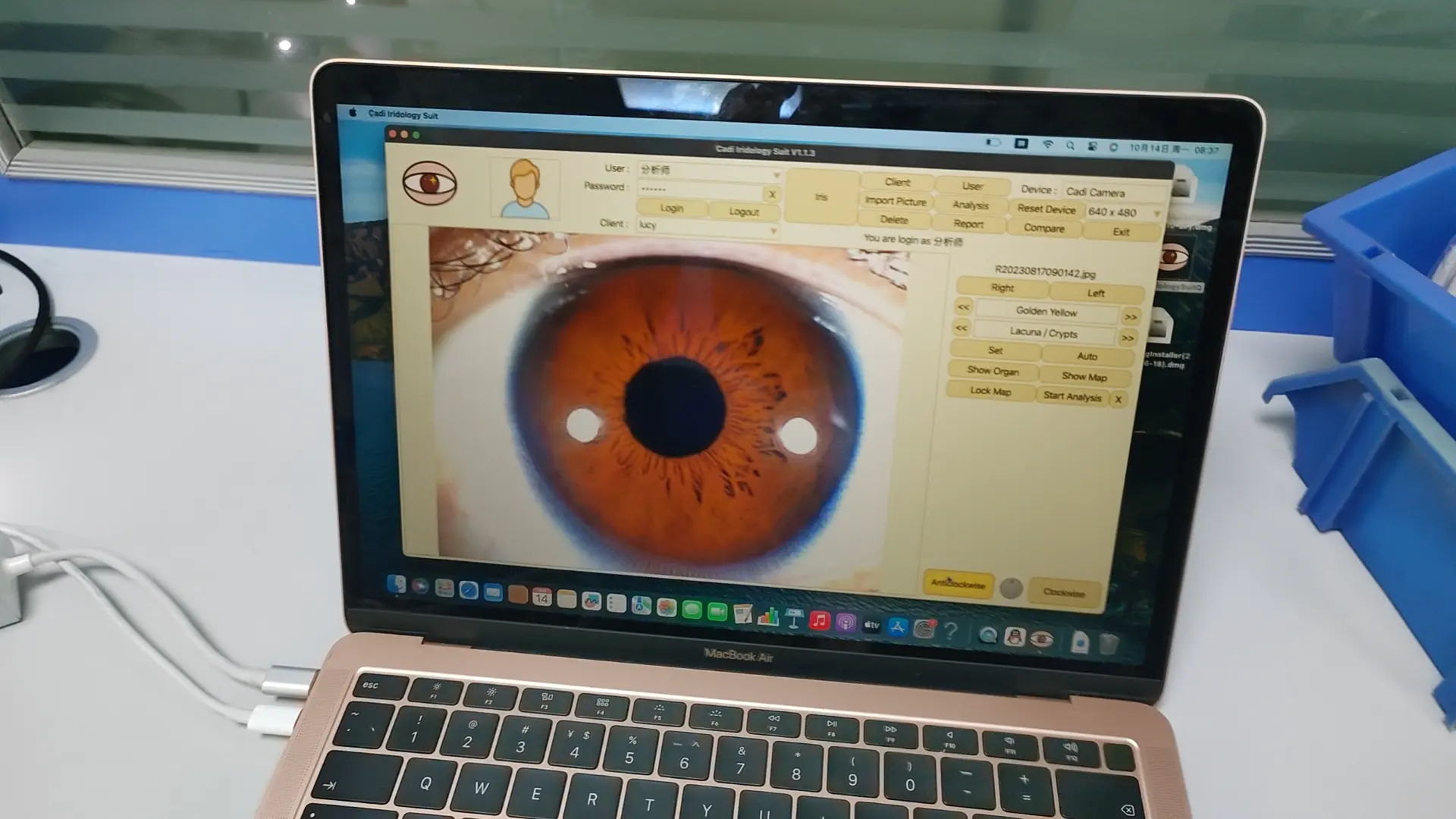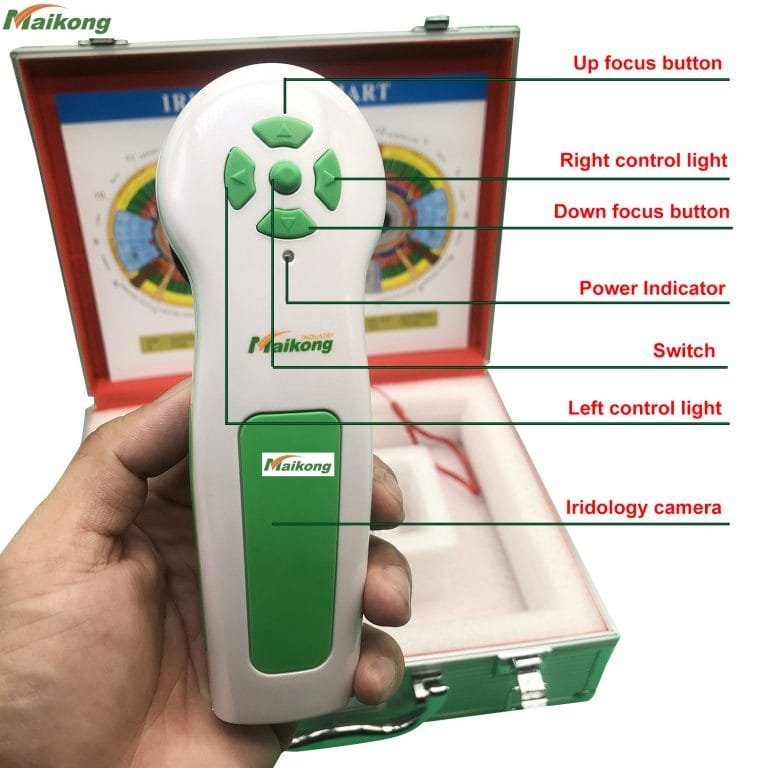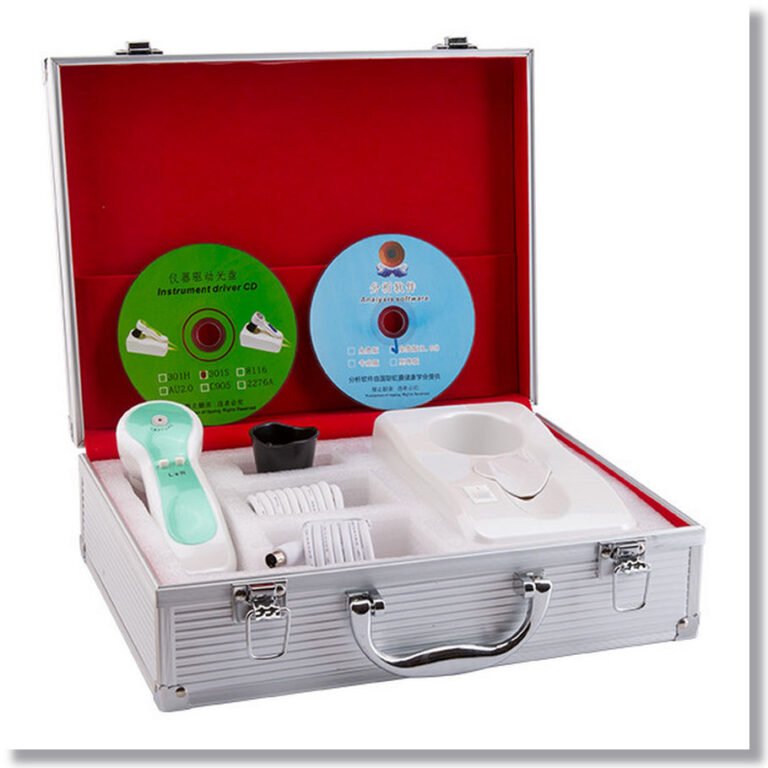
O estudo dos olhos: o que é iridologia?
O estudo dos olhos: o que é iridologia?
A iridologia também comumente chamada de análise de iridologia, também denominada diagnóstico de íris, ou diagnóstico de iridologia, é o estudo da íris do olho humano.
Uma descrição mais formal, conforme declarado pelo iridologista americano de renome mundial, Ellen Tart-Jensen é: “Iridologia é o estudo da cor, pigmentação e estrutura da íris ou porção colorida do olho, relacionando-se geneticamente através da resposta reflexa às forças e deficiências do corpo.
Além disso, muitos iridologistas observam a fronteira do aluno, bem como as marcações vasculares na esclera para ajudá -los a entender melhor a saúde geral da pessoa.
Cada íris é completamente única. Ele fornece o plano genético para o corpo de uma pessoa. As pessoas geralmente podem adquirir fraquezas físicas herdadas que podem ter afetado os membros anteriores da família. Estes podem ser detectados através da iridologia. Através da análise da íris, o iridologista pode determinar o estado geral de saúde de uma pessoa. A iridologia pode revelar muitas coisas, talvez o mais importante, a possibilidade de inflamação e irritação nas várias partes corporais. Nesse sentido, a iridologia é uma ferramenta analítica útil.
O iridologista mais moderno usa uma câmera de iridologia para tirar fotografias de seus clientes, íris esquerda e direita. Uma vez que eles obtiveram imagens de qualidade de alta resolução da íris, eles usam um mapa de iridologia ou gráfico de iridologia para iniciar sua análise de iridologia. O iridologista também pode usar o software de iridologia para ajudar na análise de iridologia.
A iridologia complementa todas as ciências da saúde, pois fornece informações, não apenas sobre o que pode estar doente, mas também sobre a causa raiz do distúrbio.
A iridologia é uma ferramenta analítica segura e não invasiva, que pode ser integrada à medicina ortodoxa e complementar.
A iridologia ajuda as pessoas a aprender sobre seus pontos fortes e fracos genéticos e a se tornarem mais conscientes do que podem fazer para se ajudar.
Iridologist, believe that iridology is one of the best assessment tools available to discover which areas of the body are genetically strong and which are deficient. Iridology can analyze the overall health according to specific iris colors and m

Iridology History
Iridology History
Iridology research began in 1670 when Dr. Philippus Meyens published a paper describing the eyes of his patients when they became sick or injured. He also noticed changes in the eye that came with healing and was able to link points on the iris to specific parts of the body. By observing the eye, he was eventually able to identify areas in the body in need of support which would show up in the eye long before physical symptoms would manifest.While eyes have been a focus in civilizations throughout the ages, “modern” Iridology got its start just over 100 years ago. In the late 1800’s, a physician from Hungary and another from Sweden began observing eyes and organizing their findings. This process of observation and correlating has been slow, but it established a foundation for others to build on.
The first book on Iridology in America, by an emigrated Austrian physician, was printed in 1904. This was followed by the works of N.D.s and other naturopathic oriented M.D.s.Working with limited magnification and photography equipment, progress was difficult. Then with the emergence of the AMA and other political and economic influences and the advent of “miracle” drugs, almost all natural medicine practices declined in this country. Dr. Bernard Jensen is credited with keeping Iridology alive in North America.In Europe, a different political and economic climate created an environment that has allowed Iridology (and other natural medicine practices) to evolve. Extensive research has been carried out in Europe and iridology is now widely accepted as a valuable preventative health care approach. Currently in the U.S. more people are showing interest in iridology as an alternative method for improving health. Now you can experience the benefits of this remarkable assessment tool/technique.

Iridology Conclusion
Iridology Conclusion
Iridology is a safe, non-interventionary diagnostic technique, it requires no needles, and no anesthetic or drugs. Yet it may provide a valuable guide to health and disease. If every doctor’s surgery employed a trained Iridologist and diagnostician, or better yet, if every doctor studied iridology many exploratory operations would be avoided. This would save, not only financial revenue, but time and suffering on the part of the patient.
Iridology, in addition to other natural sciences is probably ahead of its time in the United States. It takes a special and futuristic practitioner to employ Iridology to its full advantage. In time, Iridology is set to establish itself as a mainstream diagnostic technique into the twenty-first century.

A basic guide to iridology diagnosis in Sydney
A basic guide to iridology diagnosis in Sydney
Iridology is often used by naturopaths to help determine the state of their client’s health. There are different tools that naturopaths employ to analyse the iris, which is the coloured doughnut-shaped tissue of the eye, such as an iris camera or a torch and magnifying glass.
While iridology doesn’t enable naturopaths to diagnose diseases, the iris can be used to identify if a range of different body systems aren’t functioning correctly or are over stressed. There are also various iris signs that can signify if specific health problems are evident.
Sign 1: Cholesterol ring
Otherwise referred to as arcus senilis, the cholesterol ring is a frosted white circle which appears in the outer perimeter of the iris. If an individual has a cholesterol ring this often highlights they have high cholesterol levels or genetically have a higher risk of developing heart disease. Health advice for this condition includes regular exercise, weight loss and taking fish oils.
Sign 2: Nerve rings
Nerve rings are identified as concentric arcs which can be seen anywhere on the iris. These signify if an individual carries stress in their body. The higher the number of nerve rings an individual has, the more stress they are carrying. Epsom salt baths, kava, passion flower, yoga and meditation can help to calm a nervous system that is overactive.
Sign 3: Lymphatic rosary
Identified as a series of small white or cream beads that appear on the outer iris perimeter, a lymphatic rosary often highlights a sluggish lymphatic system. It also reveals that the immune system could need assistance with garlic and vitamin C, as well as echinacea and zinc.
Sign 4: Pulsating pupil
When a pupil can be seen pulsating in and out or is larger than it’s normal size, this is often an indicator that you could be adrenally exhausted and may be suffering from fatigue. If you take vitamin B, along with herbs related to the adrenals, such as rehmannia or liquorice, this can help you to sleep better.
Sign 5: Fine red blood vessels
If fine red blood vessels can be seen in the whites of the eyes surrounding the iris, this is a sign that the individual may suffer from allergies. To treat this it’s important to identify and remove the allergen.
Iridology Sydney
If you’re interested in having a naturopath perform this service, contact Express Healing Sydney iridology today. Our Sydney iridologist Ale’ has many years’ experience in iris diagnosis.

O que é Iridologia Abrangente?
O que é Iridologia Abrangente?
Comprehensive IridologyTM foi desenvolvido e é credenciado pela International Iridology Practitioners Association. Esta é uma combinação dos modelos americano e europeu de iridologia e contém as informações mais recentes e atualizadas sobre a teoria e a prática da iridologia, baseadas em extensas pesquisas atuais.





































